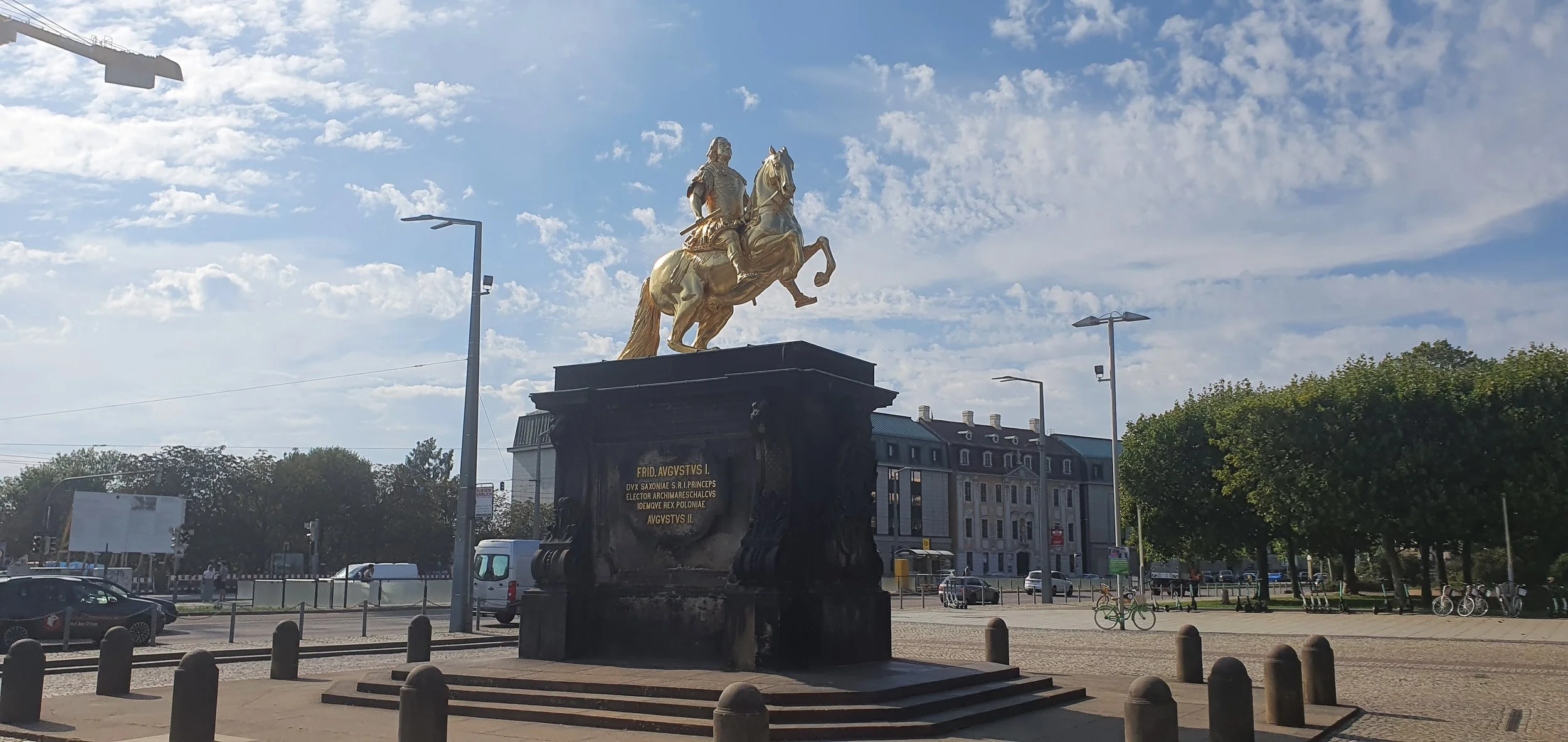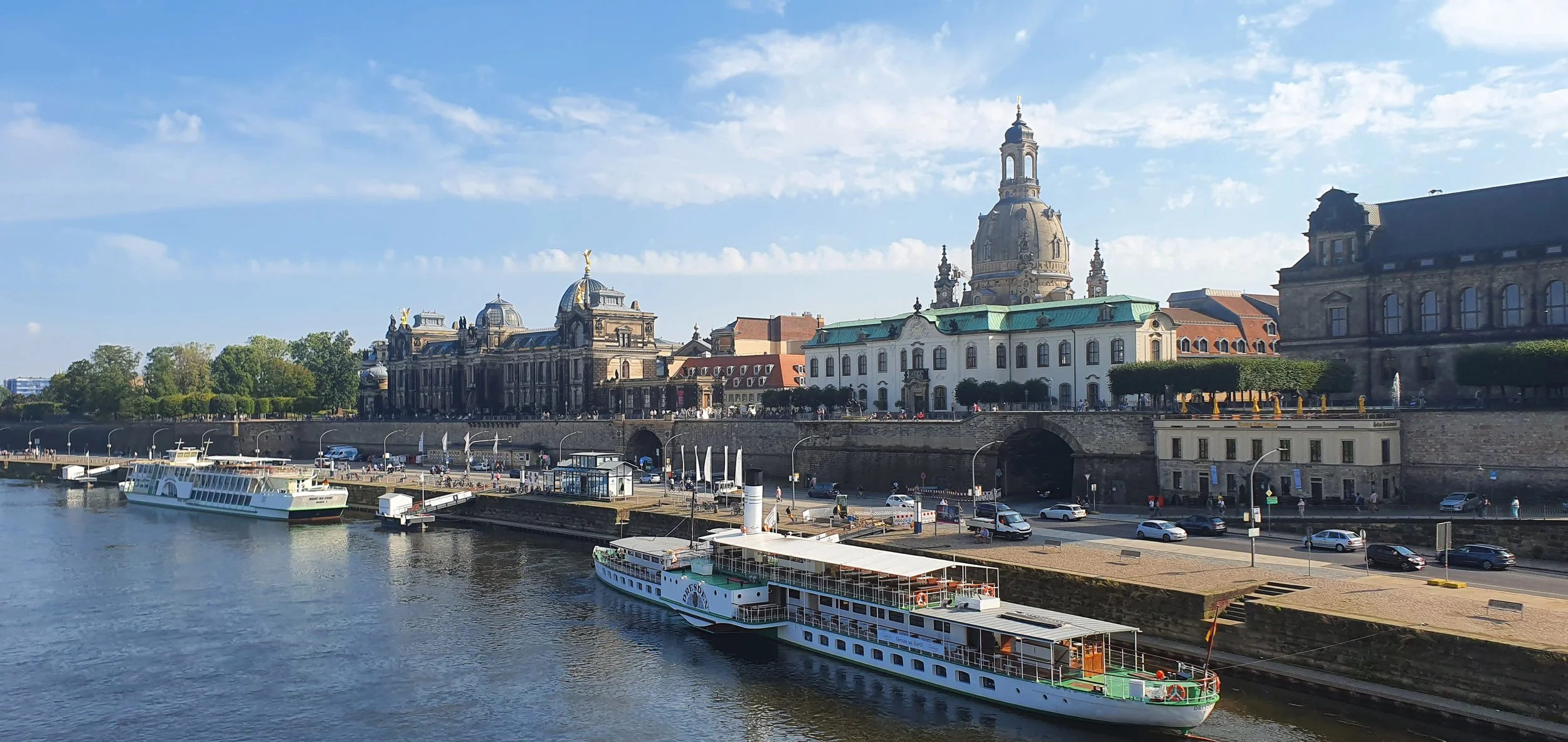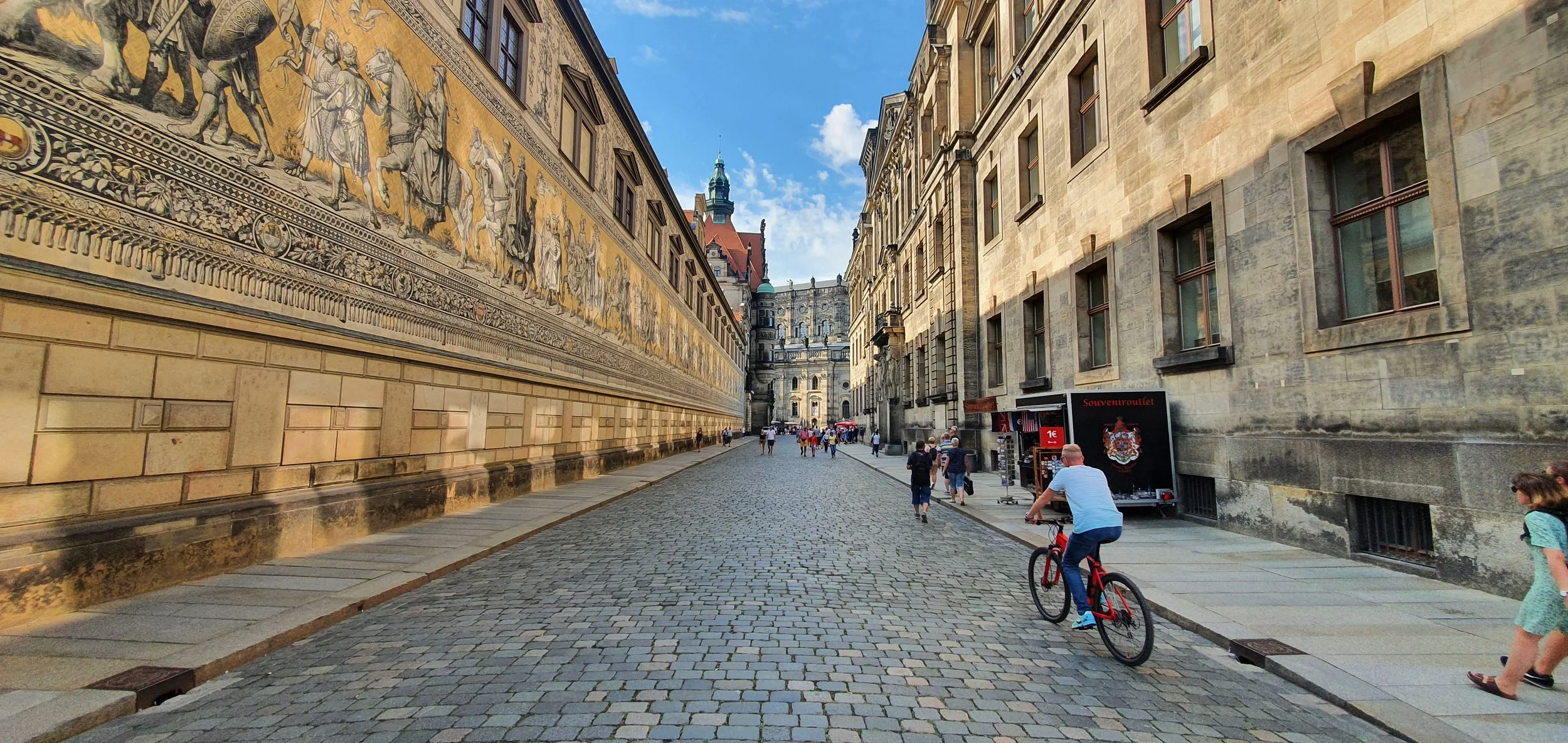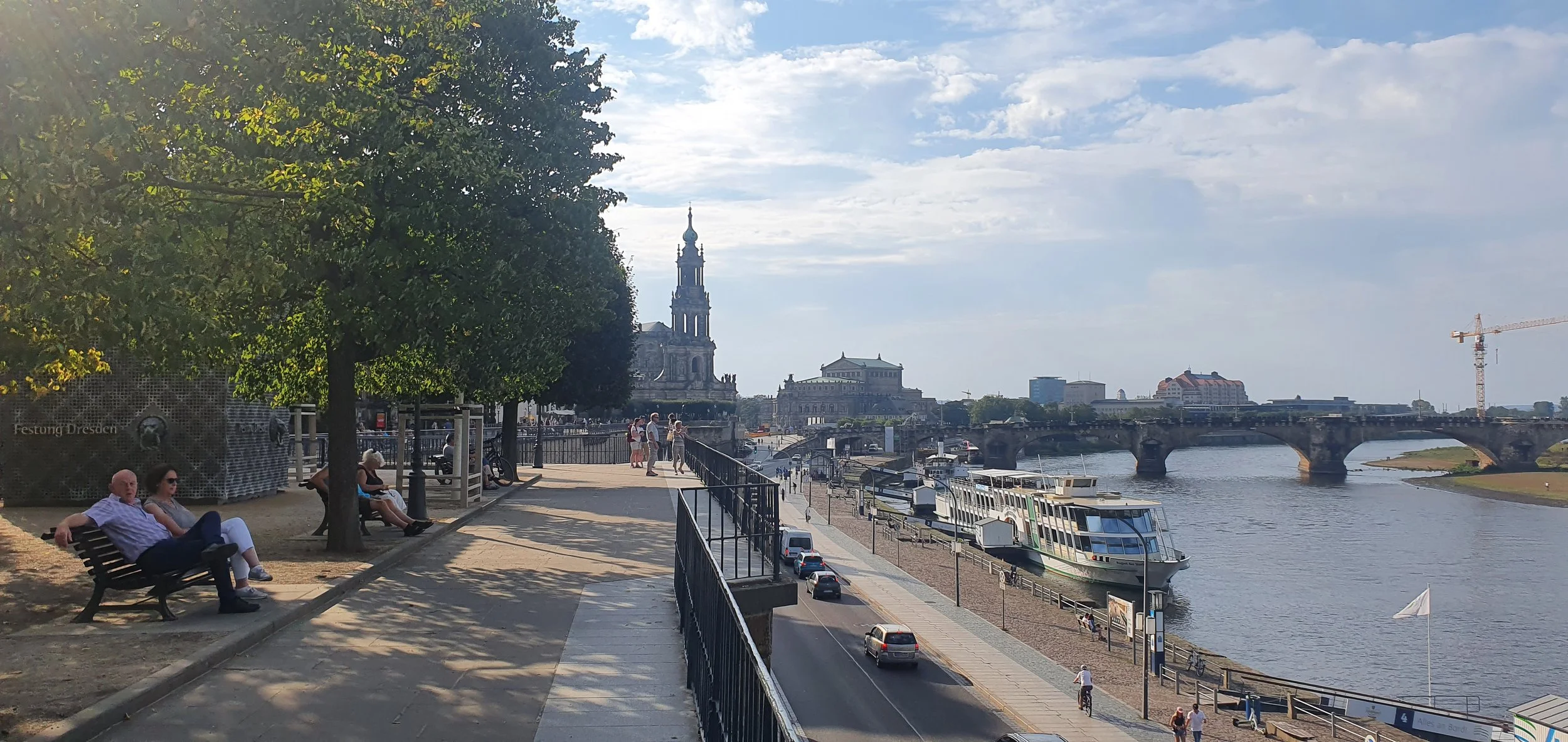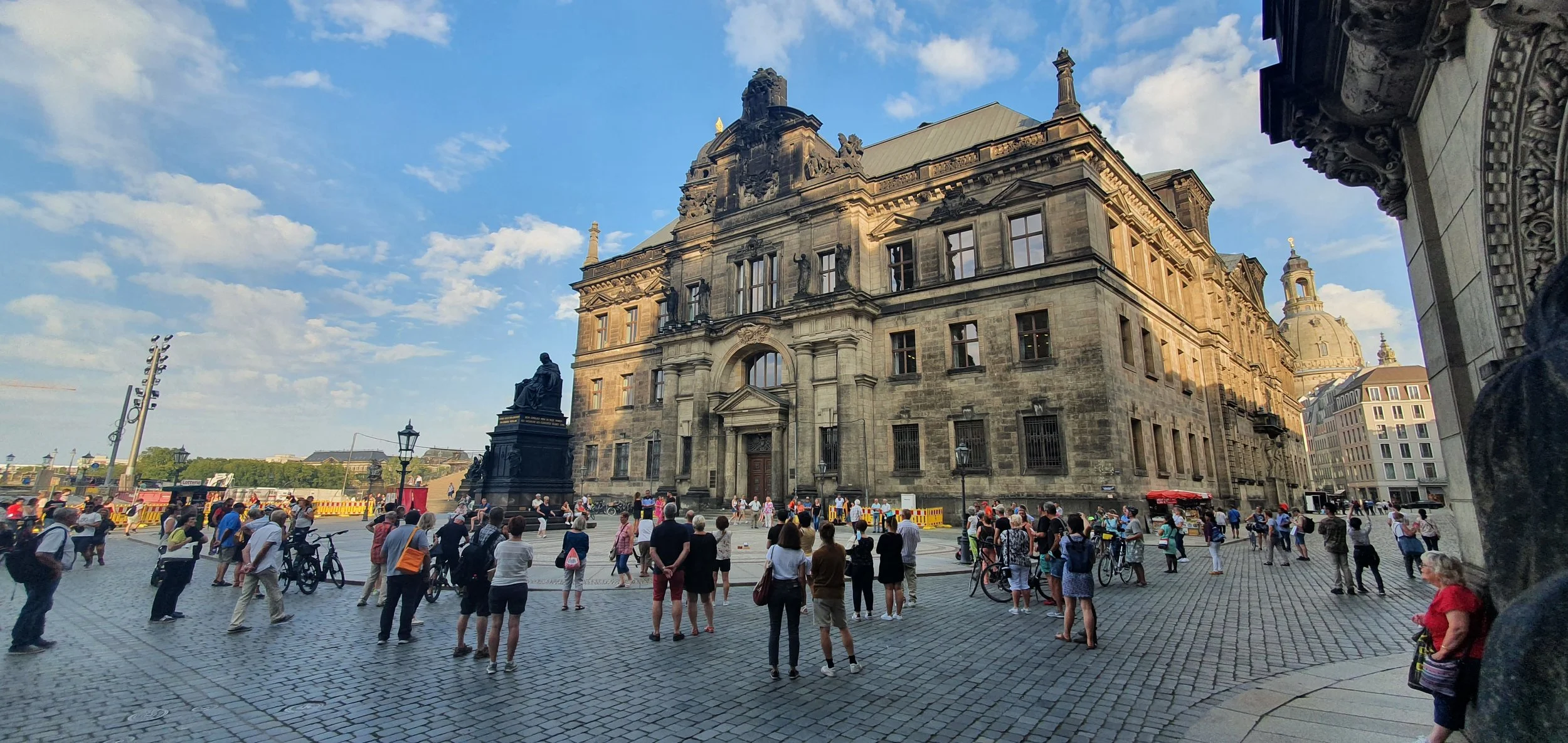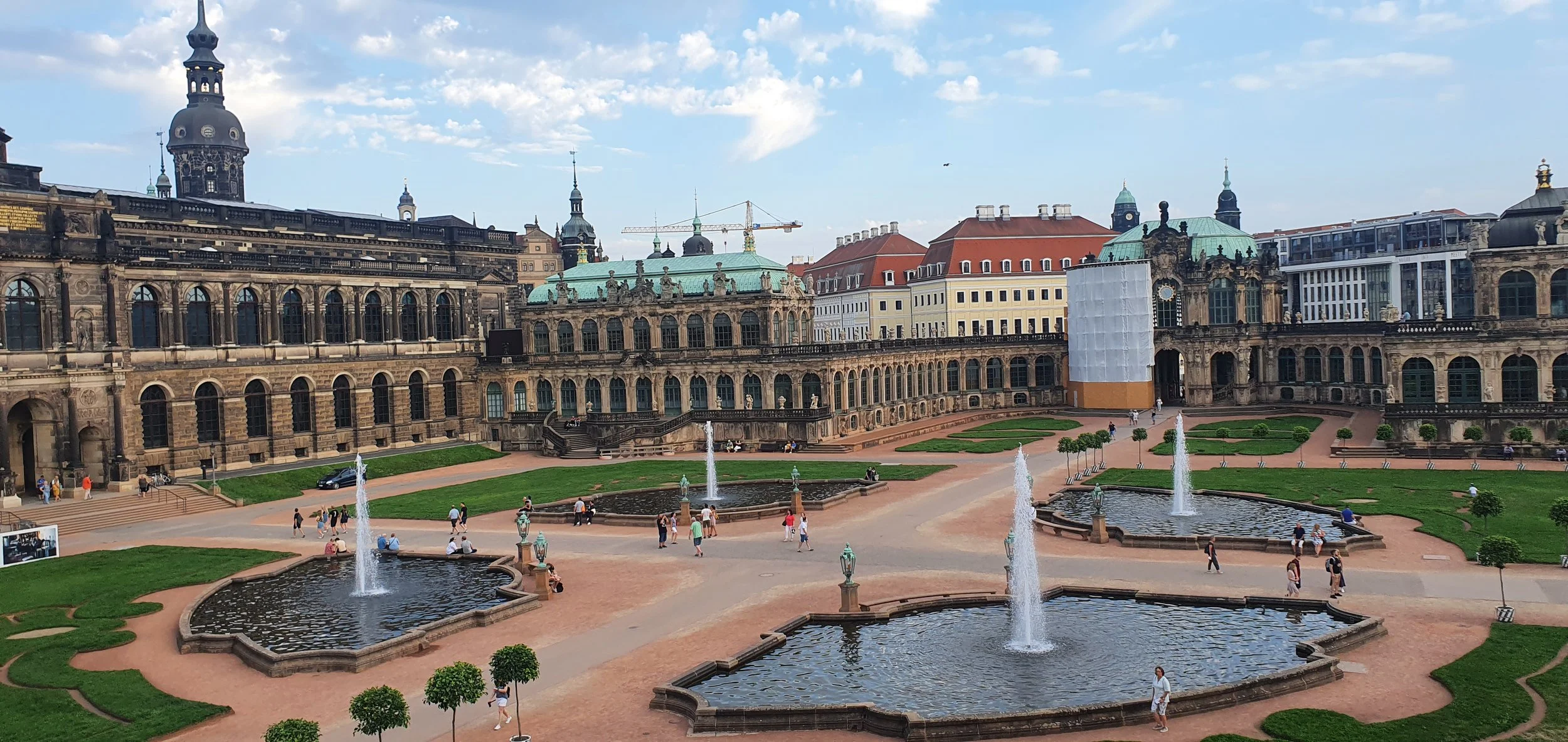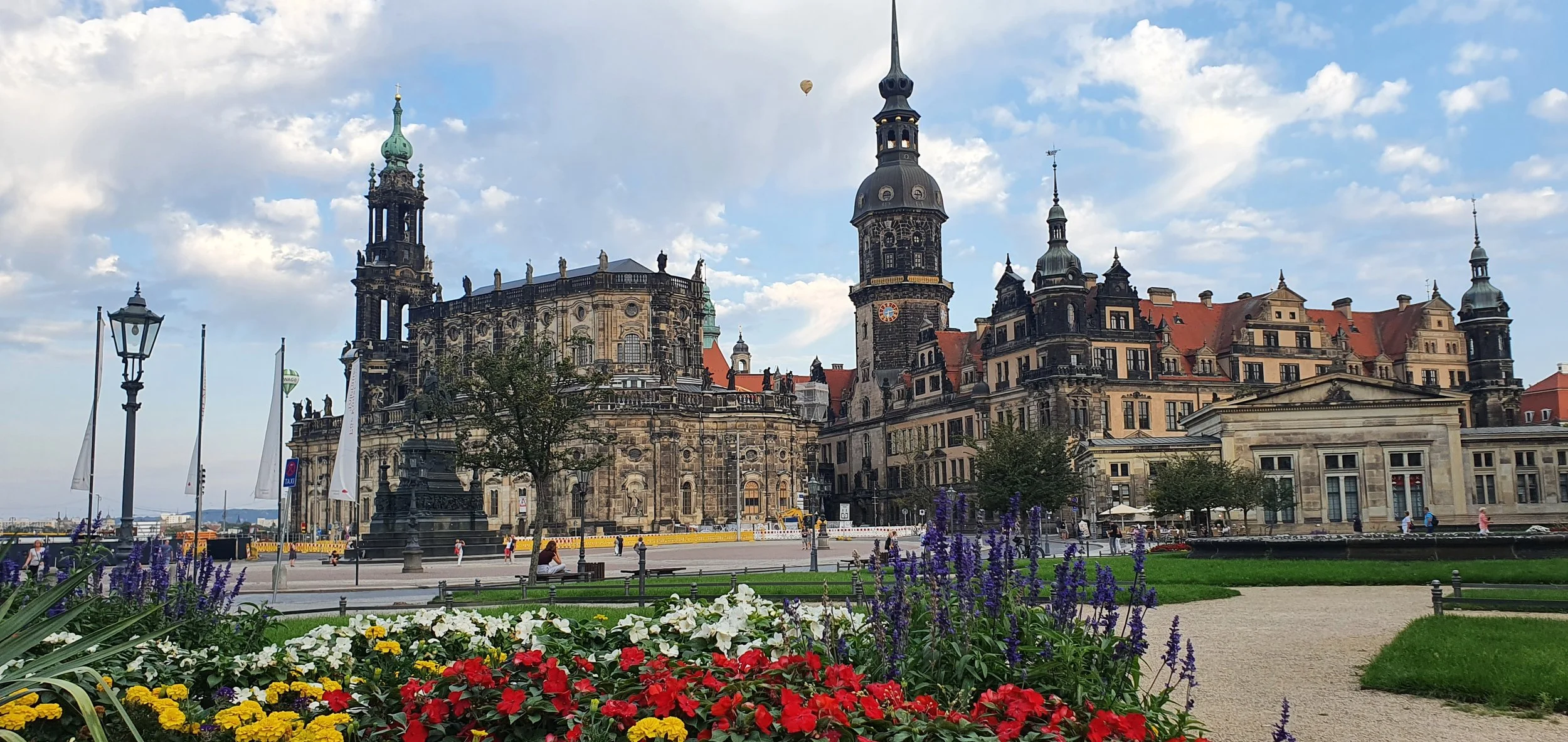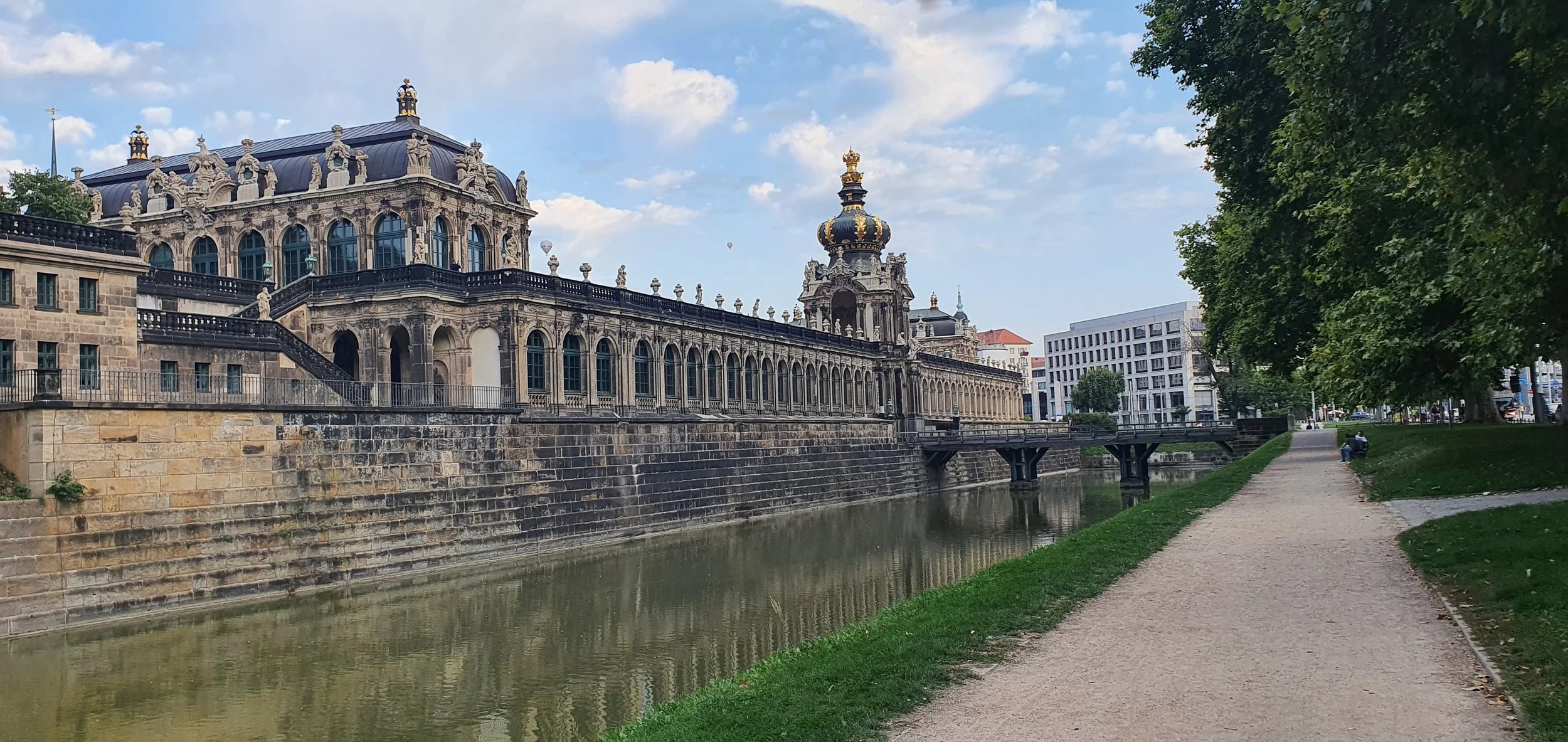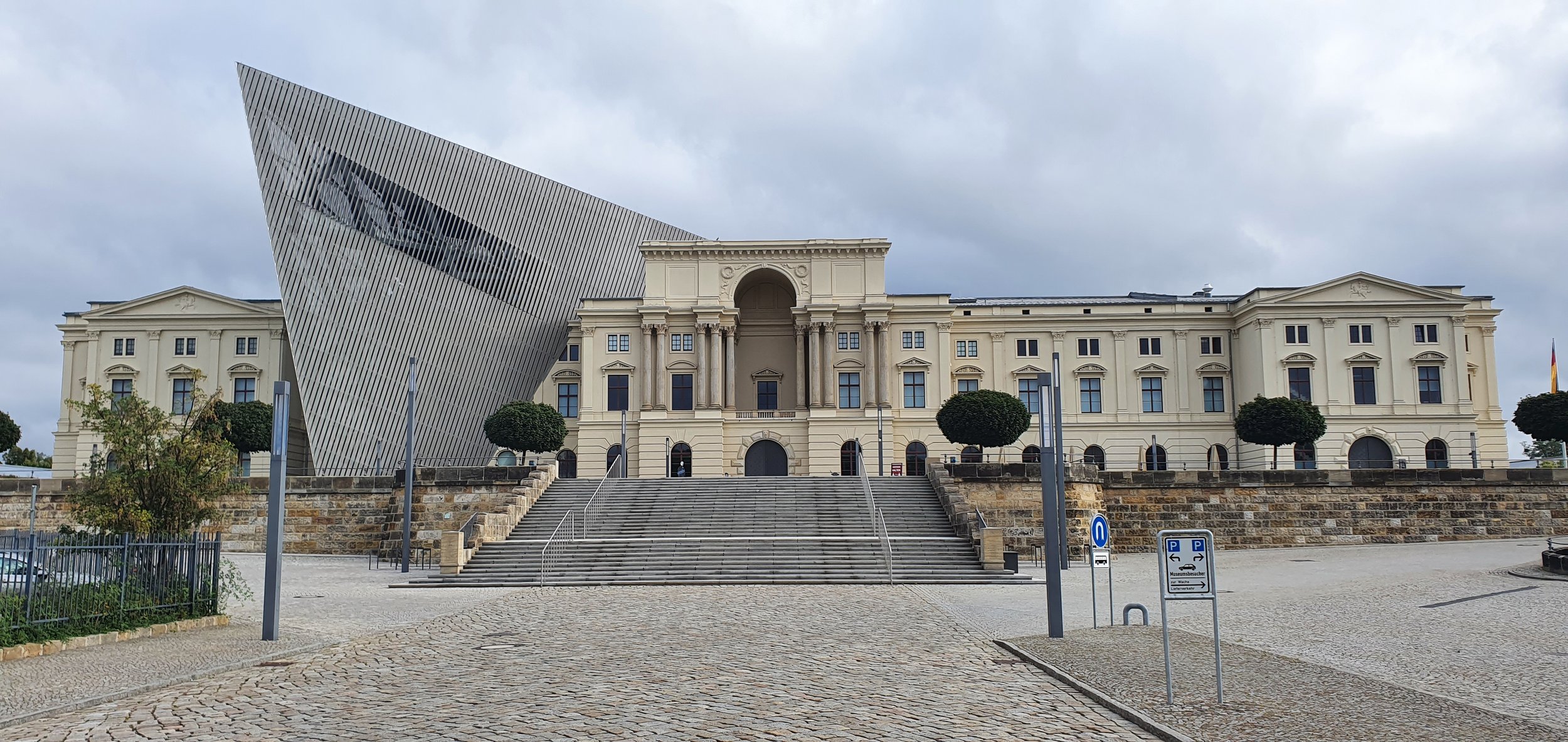
My Photos
Dresden
The Golden Rider - The Statue of Augustus the Strong (Elector of Saxony and King of Poland) is located since 1736 at New Town market. The monument is covered with gold leaf and shows August the Strong in a Roman armor on his break to the Kingdom of Poland to the east.
Elbe River - The Dresden Elbe Valley is a cultural landscape and former World Heritage Site stretching along the Elbe river in Dresden, the state capital of Saxony, Germany. The valley, extending for some 20 kilometres (12 mi) and passing through the Dresden Basin.
The Furstenzug (Procession of Princess) - The Fürstenzug is a large mural of a mounted procession of the rulers of Saxony. It was originally painted between 1871 and 1876 to celebrate the 800th anniversary of the Wettin Dynasty, Saxony's ruling family.
Frauenkirche - The Dresden Frauenkirche is a Lutheran church in Dresden, the capital of the German state of Saxony. Destroyed during the Allied firebombing of Dresden towards the end of World War II, the church was reconstructed between 1994 and 2005.
"Balcony of Europe" - Brühl's Terrace is a historic architectural ensemble in Dresden, Germany. Nicknamed "The Balcony of Europe", the terrace stretches high above the bank of the river Elbe. Located north of the recently rebuilt Neumarkt Square and the Frauenkirche, is one of the favourite inner-city places of both locals and tourists for walking, people watching, and having a coffee.
Heritage Building - Higher Regional Court of Dresden The Higher Regional Court of Dresden has its seat in the historic Ständehaus on Schlossplatz.
Zwinger - The Dresden Zwinger still shapes the city’s image to this day, reminding us of the glamorous baroque period like no other building. A courtly work of art was created between the city’s inner and outer fortifications at the behest of Augustus the Strong. The architectural project, favored over a simple orangery, was carried out by Matthaeus Daniel Poeppelmann und Balthasar Permoser. The planned extension to the palace was replaced by the Picture Gallery and Semper Opera House. The museums of the Staatliche Kunstsammlungen Dresden are now waiting to be discovered at the Zwinger: the Porcelain Collection, Old Masters Picture Gallery and the Royal Cabinet of Mathematical and Physical Instruments.
Zwinger 2 - From spring 2021, visitors will be able to discover the multimedia Zwinger Xperience, which will immerse them in a world of festivals, parades and drama with an exciting range of panoramic projections and virtual reality stations. What’s more, little orange trees give the Zwinger an extra Mediterranean charm from May to October.
Zwinger 3 - The Zwinger itself was almost completely destroyed during World War II, by which time its contents had already been removed. It was later rebuilt in its original style and its collections returned.
Zwinger 4 - The Zwinger’s collection contains more than 700 Old Master paintings in the Gemäldegalerie Alter Meister; sculpture dating up to 1800 in the Skulpturensammlung; an assembly of some 20,000 pieces of Chinese, Japanese, and Meissen porcelain objects in the Porzellansammlung; and various historical scientific appurtenances in the Mathematisch-Physikalischer Salon, including measuring and cartographic devices and optical equipment.
Theaterplatz - The Theaterplatz (English: Theatre Square) in Dresden is a historic square in the city. It is located in the west of the inner old town.
Zwingergarten - The Zwinger is a palatial complex with gardens in Dresden, Germany. Designed by architect Matthäus Daniel Pöppelmann, it is one of the most important buildings of the Baroque period in Germany. Along with the Frauenkirche, the Zwinger is the most famous architectural monument of Dresden.
last piece standing! - The primary symbol of Dresden’s destruction is the Lutheran Frauenkirche (Church of Our Lady), which had one of the largest domes in Europe. Several hundred Dresden residents took shelter from the bombs in the church’s underground vaults and crypts. The church withstood the bombing for two days, but ultimately, the dome collapsed on the morning of February 15 from extreme heat; the temperature surrounding the church was estimated at 1,830°F. Reports say the church pillars became red-hot and exploded and that the outer walls shattered. More than 5,000 tons of stone plummeted to earth. The people in the basement evacuated just in time, only to succumb to the firestorm outside.
Military Museum - After six years of extensive construction work, the Museum of Military History is set to capture the attention of visitors not only through its impressive architecture, but also with a completely new concept for the presentation of over 800 years of German military history.
Tanks & Armored vehicles - The museum houses a vast collection of military history, from technology and handguns to artistic renderings of war. Traditionally, military museums focus primarily on weapons technology and the glamorous representation of national armed forces; they impress visitors by shows of military power and display wars in isolation from other historic events.
